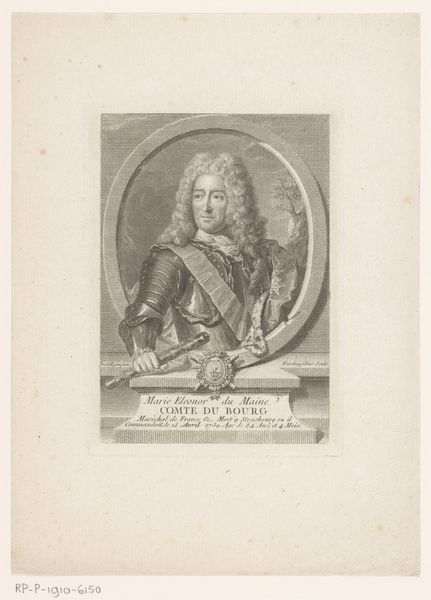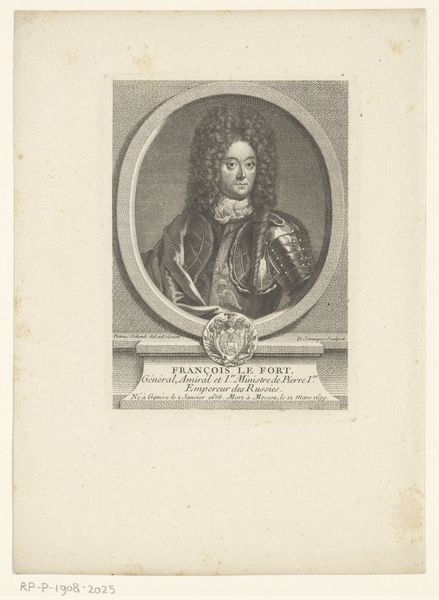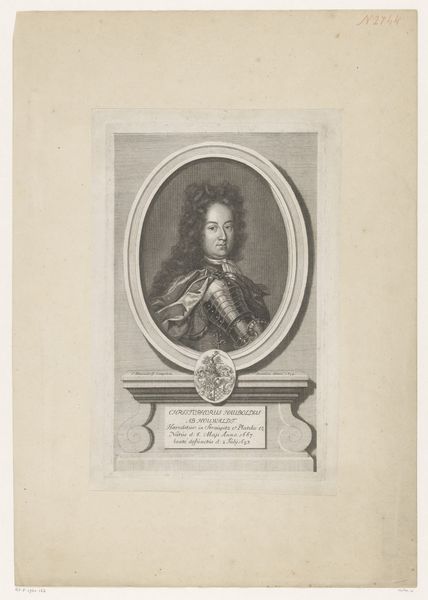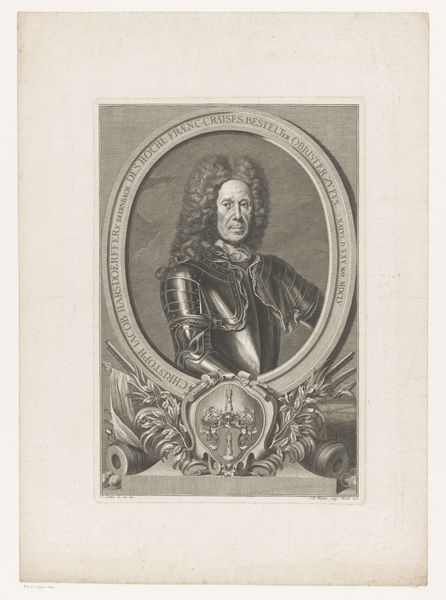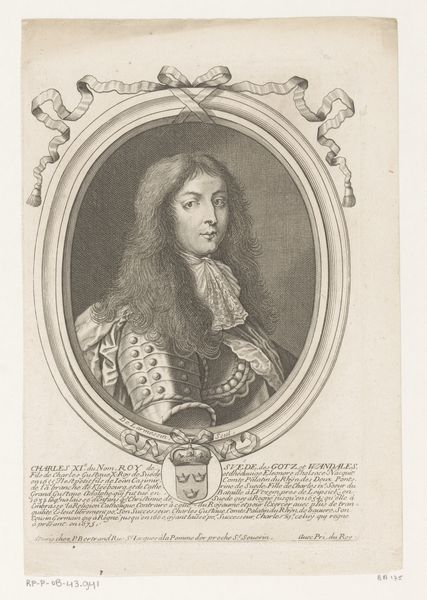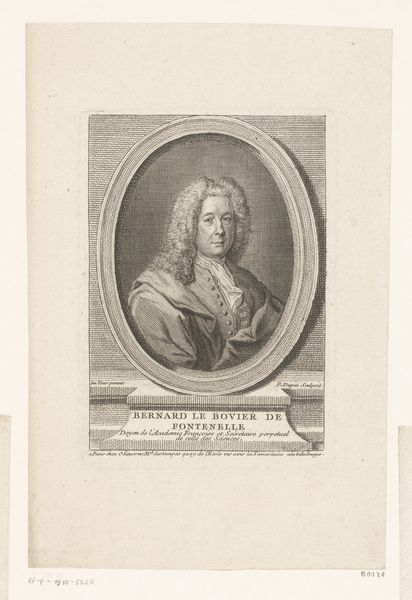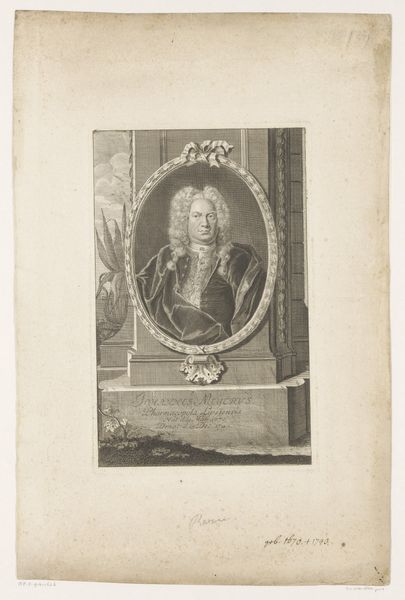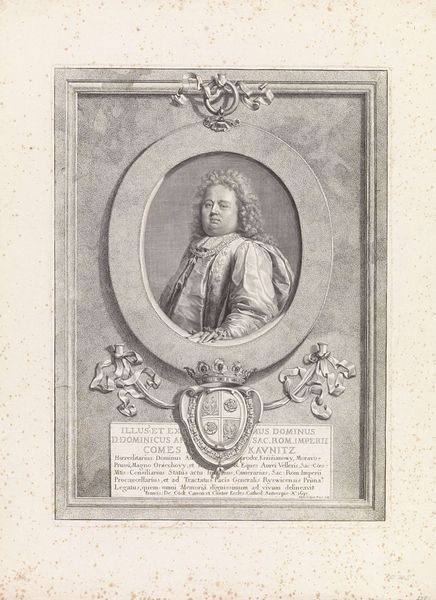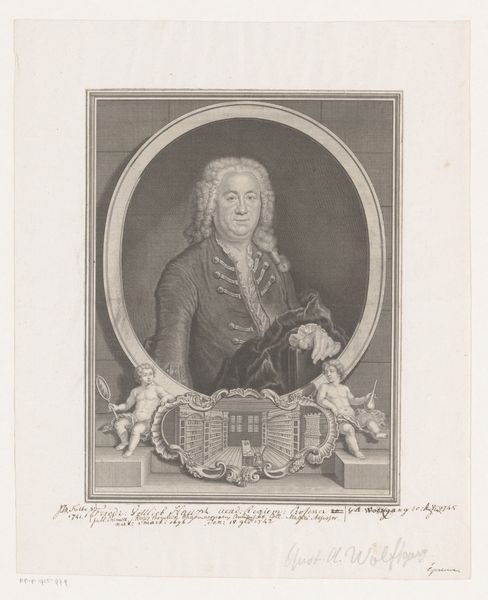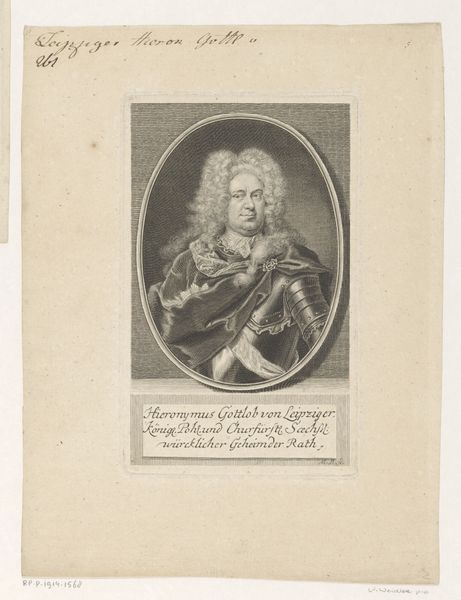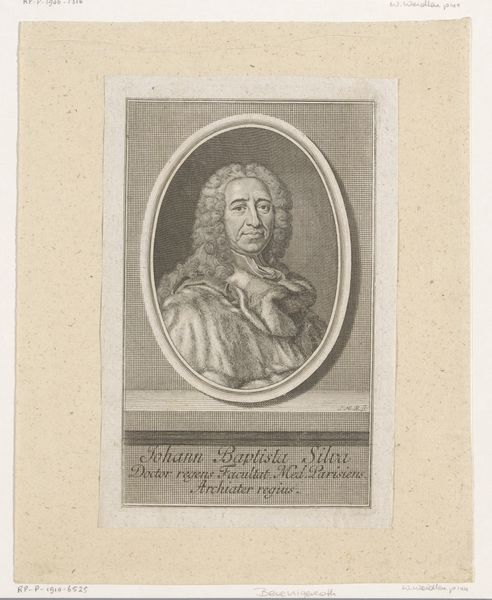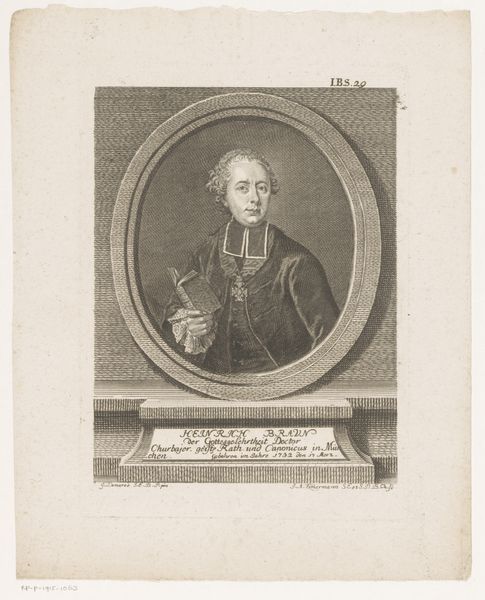
Portret van Albrecht Wolfgang Graf zu Schaumburg-Lippe 1728 - 1767
0:00
0:00
print, etching, paper, engraving
#
portrait
#
aged paper
#
toned paper
#
baroque
# print
#
etching
#
paper
#
engraving
Dimensions: height 155 mm, width 99 mm
Copyright: Rijks Museum: Open Domain
Editor: Here we have Johann Martin Bernigeroth's "Portret van Albrecht Wolfgang Graf zu Schaumburg-Lippe," made sometime between 1728 and 1767, a print consisting of etching and engraving on paper. It's striking how much detail Bernigeroth was able to get with etching and engraving alone! What should we make of a portrait done in print form, in terms of its creation and reception? Curator: Precisely. It's crucial to consider this portrait not just as an image of a count, but as a produced object, conceived and consumed in a specific socio-economic framework. Think about the materiality of printmaking. Engraving and etching were labor-intensive, requiring specialized skills and workshops. Editor: So the creation of this artwork relied on many different laborers, from the artist, to the paper maker and more... Curator: Yes! And consider the implications of *printing* a portrait. Unlike a unique painted portrait commissioned exclusively for the sitter or his family, a print suggests wider distribution and a different kind of viewership. It speaks to notions of status and power made available – though likely at a cost – to a broader segment of society. Were these prints a means of disseminating the count's image, and if so, to what end? Who was the target audience? Editor: That makes me rethink my initial assumptions about portraiture as purely commemorative. It's much more tied into labor and capital, than I thought! Curator: Exactly! Look closer: the aging of the paper stock, itself a crafted material; the specific techniques of line engraving chosen... all contribute to the artwork's meaning as a produced, circulated, and consumed commodity, one tied directly to both the subject *and* its audience's aspirations. Editor: I never considered the economic implications and access granted through printing! It reshapes how I view portraiture altogether. Curator: Understanding art through its production and circulation reveals complex social relationships otherwise obscured by conventional aesthetic analysis.
Comments
No comments
Be the first to comment and join the conversation on the ultimate creative platform.
